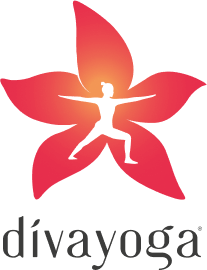TIBETAN RITES

Tibetan Yoga comprises 5 simple, dynamic yogic poses known as The 5 Tibetan Rites. They are yogic routines based on a ritual of exercises done by the Tibetan Lamas, which helped them to live very long and healthy life.
Benefits
- This is a rejuvenating Yoga style that increases the sense of well being
- Rejuvenation and looking & feeling younger
- Relief from joint pain and arthritis
- Relief from back pain & Spondylitis
- Increased sense of well-being
- Sound sleep
- Improved memory
Who can do?
Ideal for those who seek relief from joint pain, arthritis, and spondylitis.
Who should avoid?
People who suffer from chronic joint pain. People who face disequilibrium should avoid this form.
How to do the 5 Tibetan Rites
1. Twirling
a. Stand with your feet a little apart and your arms shoulder height, palms facing down. b. Begin to spin in a clockwise direction (as if you were standing on a clock) trying to keep your breath steady as you twirl.
Tip: Speed is not important here (the direction is) so don’t twhirl so quickly that you fall over. If you feel extremely dizzy when you stop spinning, bring your palms together and look at your thumbs. Breathe deeply.
2. Leg raises
a. Lie on your back on the floor with your palms by your sides and your legs straight. b. Engage your lower belly, inhale and raise your legs in the air whilst at the same time, lifting your head. Exhale and lower everything back down to the floor. Move between the two positions steadily and with control.
Tip: If this is too strong, place your hands underneath your buttocks or bend your knees. You shouldn’t feel any pain in your back or neck whilst doing this exercise.
3. Dynamic Camel
a. Come to a kneeling position. As you inhale, arch your spine, slide your hands down the back of your thighs and tip the head slightly back. b. Exhale back to an upright position and tip the chin forwards towards the chest.
Tip: Keep the lower belly pulled in and up to protect the lower back. Only take the head back as much as feels right for your neck. Place padding under the knees if they’re sensitive.
4. Moving tabletop
a. Come into a seated position with your legs stretched out in front of you, palms flat on the floor. b. Breathe in, press into the hands and swing the hips forward and upwards so that you come into a ‘tabletop’ position, feet flat on the floor. You can keep the chin pointing upwards or take the head back if it feels okay on your neck. Exhale, swing the hips back and return to the original position as you exhale. Move between the two positions steadily and fluidly.
Tip: You can start from a bent-kneed position with the hips slightly forward from the hands until you build up the strength in your arms. You could also try placing your palms on blocks to give you a little more height.
5. Downward Dog to Upward Dog
a. Come into a Downward Facing Dog pose, spreading your fingers wide and pressing your palms into the floor. Draw the thighs up and back and create length in the spine. b. Inhale, roll over the toes, bring the shoulders over the wrists and come into Upward Facing Dog. Keep the neck long and the collar bones broad. As you exhale, press firmly into the hands, draw the hips up and back, and return to a Downward Facing Dog pose.
Take extra precaution if you have:
Heart or breathing problems: Before trying these exercises, talk to your doctor to find out they’re safe for you to do.
Neurological disorders: Disorders like Parkinson’s disease or multiple sclerosis can cause poor balance. If you have one of these conditions, these exercises may not be safe for you to perform.
Conditions that cause dizziness: If you’re prone to dizziness, talk to a doctor before trying the first rite. The spinning motion may aggravate various conditions, including vertigo, circulatory issues, or nausea from medication. Pregnancy. The spinning and bending movements may not be safe if you’re pregnant. Recent surgery. The rites may cause complications if you’ve had surgery within the last 6 months.
